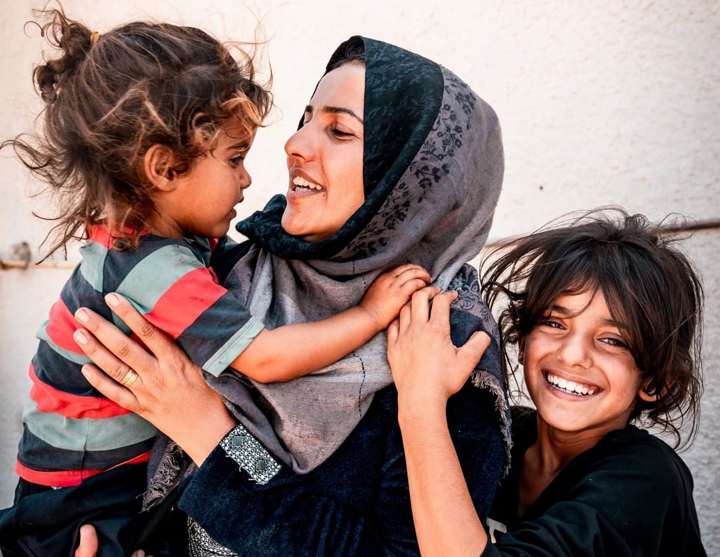The Role of Charities in Supporting Refugees
-
 Mark Dinn
Mark Dinn - 06 Dec, 2023

When we think of the word “home,” we often conjure images of comfort, security, and familiarity. But for millions of refugees around the world, “home” is a distant memory, something they’ve had to leave behind in the face of unimaginable hardships. It’s in these moments of despair that charities step in, providing not just basic necessities but a semblance of hope and humanity. The role of charities in supporting refugees is not just significant—it’s life-changing.
A Lifeline in Crisis
Charities have always been at the forefront of crisis response, but when it comes to refugees, their work takes on a whole new level of urgency. Imagine fleeing your home with nothing but the clothes on your back, traversing dangerous terrains, only to end up in a foreign land where everything is unfamiliar. It’s overwhelming. Charities like the International Rescue Committee (IRC) are often the first on the ground, offering emergency aid such as food, water, and shelter.
Take, for instance, the situation in Syria. Over the past decade, millions have fled the conflict, seeking refuge in neighboring countries and beyond. The IRC has been instrumental in providing essential services to these displaced populations. From medical care to education, the IRC’s work ensures that refugees don’t just survive—they have a chance to rebuild their lives.
 International Rescue Committee in Syria
International Rescue Committee in Syria
Beyond the Basics: Rebuilding Lives
But supporting refugees goes beyond just addressing their immediate needs. It’s about helping them rebuild their lives, integrate into new communities, and regain a sense of normalcy. This is where charities like Save the Children play a crucial role. For refugee children, the trauma of displacement can have long-lasting effects. Save the Children focuses on providing education, psychosocial support, and child protection services to help these young minds heal and thrive.
One of their programs, “Healing and Education through the Arts,” uses creative expression to help refugee children process their experiences. Through drawing, storytelling, and drama, these kids find a way to cope with their trauma, connect with others, and, most importantly, be kids again.
A Global Network of Support
Refugees often end up scattered across the globe, far from their home countries, with little to no support system. Charities like the United Nations High Commissioner for Refugees (UNHCR) work to bridge that gap, coordinating efforts between governments, NGOs, and local communities. The UNHCR operates in over 130 countries, offering protection and assistance to refugees, stateless people, and internally displaced persons.
Their work is vast and varied, from providing legal assistance to ensuring that refugees have access to healthcare and education. The UNHCR’s “Global Compact on Refugees” aims to improve the international response to refugee crises, promoting responsibility-sharing and ensuring that refugees have the support they need, no matter where they end up.
Corporate Partnerships: A New Era of Support
It’s not just traditional charities that are making a difference—corporate partnerships are playing an increasingly important role in supporting refugees. Brands like IKEA have stepped up in ways that go beyond mere philanthropy. The IKEA Foundation has partnered with the UNHCR to provide better living conditions for refugees, particularly in camps. Their “Better Shelter” project introduced flat-pack, easy-to-assemble shelters that offer a more durable and comfortable alternative to traditional tents.
These shelters, equipped with solar panels and designed to withstand harsh weather conditions, have been a game-changer in refugee camps across the world. It’s a perfect example of how innovative thinking and collaboration can create real, tangible change.
Empowering Refugees: Skills and Employment
One of the biggest challenges refugees face is finding employment and becoming self-sufficient in their new countries. Charities like the Refugee Council in the UK focus on this aspect, offering training programs, language courses, and employment support to help refugees integrate into the workforce.
The Power of Community Support
While international charities and large-scale operations are crucial, the power of local communities should not be underestimated. Grassroots organizations often have a deep understanding of the specific needs of refugees in their area and can offer tailored support that larger organizations might miss.
Take the example of “Choose Love,” a charity that started as a social media campaign and has grown into a global movement. Choose Love works with local organizations in refugee camps and communities, providing everything from winter clothing to legal aid. Their model is unique—donors can buy specific items that refugees need, like sleeping bags or school supplies, through an online store.
 Choose Love charity
Choose Love charity
This approach not only empowers donors to see exactly where their money is going but also ensures that refugees receive the items they most urgently need. It’s a simple yet effective way of making a direct impact.
A Shared Responsibility
At the end of the day, supporting refugees is a shared responsibility. Governments, charities, corporations, and individuals all have a role to play. Charities provide the structure and resources, but it’s the collective effort of everyone involved that truly makes a difference.
Brands like Ben & Jerry’s, known for their social activism, have also joined the cause. Their “Refugees Welcome” campaign highlights the importance of inclusivity and challenges the negative stereotypes often associated with refugees. By using their platform to raise awareness, they’re helping to shift public perception and encourage more people to get involved in supporting refugees.
The work of charities in supporting refugees is far from over. As conflicts continue to displace millions and climate change threatens to create even more refugees in the coming years, the role of charities will only become more critical. But it’s not just about responding to crises—it’s about creating a world where refugees are welcomed, supported, and given the opportunity to thrive.
It’s about recognizing the resilience and strength of refugees, and ensuring that they have the resources and support they need to rebuild their lives. Because at the end of the day, we’re all part of the same global community, and it’s our collective humanity that binds us together.


